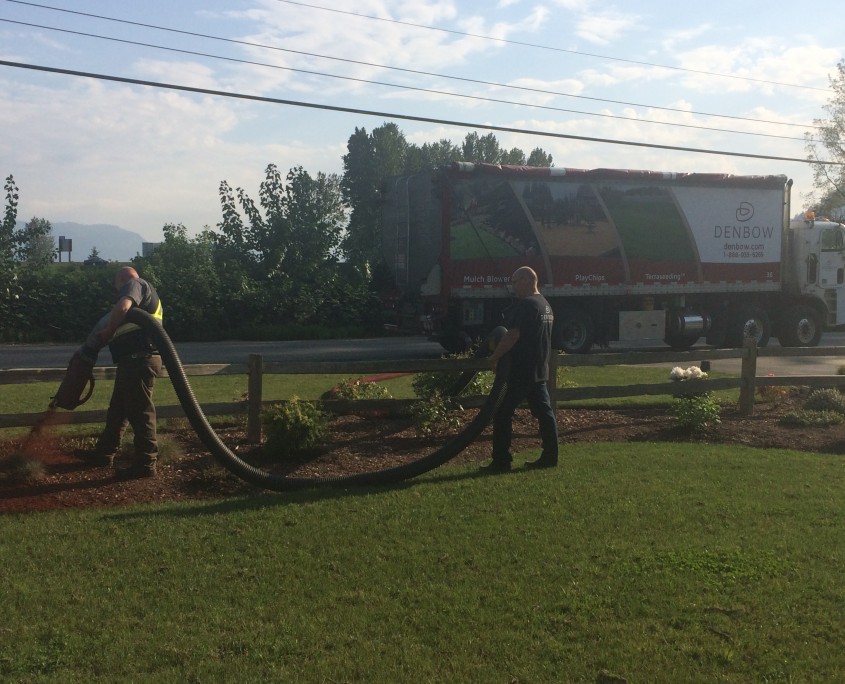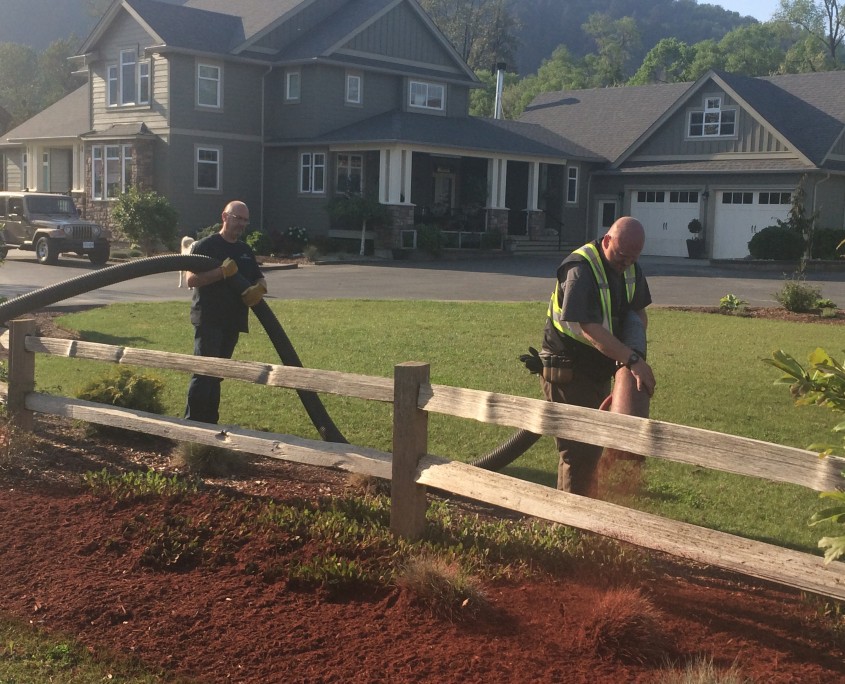Playground Wood Chips a Better Alternative to Pea Gravel
Playground Wood Chips a Better Alternative to Pea Gravel
Are playground wood chips a better alternative to pea gravel? We think so.
Playground wood chips, as the name implies are raw wood materials that are specially designed, engineered and installed for use in playgrounds. The difference between playground wood chips and wood chips used for mulch in gardens is that playground wood chips are “engineered wood fiber” (EMF) with greater shock absorbency. This is key to provide the maximum safety for children at play within the parks.
Playground wood chips are more fibrous than garden wood chips used for mulching. The size of playground wood chips varies but to maintain compliance with the Canadian Consumer Product Safety Act (CCPSA), are less than a few inches long.
So why are playground wood chips better than pea gravel?
First, it is less of a choking hazard. Pea gravel can be an incredible choking hazard for small children under the age of three. This compared to the larger wood fibre that is more difficult to have a child actually swallow.
Second, pea gravel allows things to be easily embedded under the surface. Since pea gravel is made up of a bunch of small rocks it does not clump or pad down like wood chips. Wood chips are actual chips of wood which allows them to lay down and interlock to create a more uniform surface while providing maximum cushion. The uniform top prevents things like needles and other sharp objects from falling below the surface and endangering the kids that are at play.

Third, pea gravel’s ability to cushion falls or kids’ feet when they jump is only in it’s displacement and depth of product. Once the pea gravel has been displaced or the depth of product is too low children could hit the underlying bedrock and get injured. What about wood chips? See our point above. Playground wood chips give the ability to create a uniform surface, interlocking to prevent large product displacement and providing maximum absorbency.
Finally, pea gravel are small rocks. If a child does become frustrated and decides to throw a handful of little rocks it does have the potential to hurt or worse, take out a child’s eye. Yes, the same can be said for wood chips but by nature wood chips are lighter and are less likely to reach a velocity that will hurt other children. A child could throw a wood chip but it is light and less likely to result in injury.
So what is the best installation practices for this “best playground cover”, how should it be installed?
Playground Wood Chips – Installation
To reduce injury, playground woods chips are installed in beds nine to twelve inches on level ground and must be replaced as weather and wear. It is important to consider the ratio of compaction due to weather and wear and add playground wood chips to maintain safety. These depth of playground wood chip beds allow for shock absorption from most falls from playground equipment from up to ten feet. As for most types of wood chips, playground wood chips should be raked frequently to avoid moisture buildup. In unsheltered and high use areas of playgrounds, it may be necessary to add playground wood chips. For example, areas beneath swings and slides are most likely to require additional playground wood chips. New layers of wood chips can be added atop the existing layers.
What is the best way to install woodchips?
Blow it in. With the techonology of blower trucks, you can now get your material delivered and installed all at one time. It is a huge time and personelle saver and the cost to do it is marginal compared to the labour and effort of using wheel barrows. Check out more about our blower trucks.
Advantages of Playground Wood Chips
In addition to safety and shock absorption features, installing playground wood chips offers other advantages. These include:
- Greater surface cohesiveness with maximum absorbency
- Leaves and other debris remain on the top layer
- Chemical free
- Insect resistant
Playground areas are used mostly by children under the watchful eyes of their parents or guardians. Playground wood chips are moisture resistant which also provides the added feature of mold and mildew resistance. Due to layering of the beds, leaves and other debris remain on the top layer of the bed and are quickly and easily removed. Since playground woods chips are created from natural wood fibres, they are also chemical free. This assures parents and children of playground materials are environmentally safe. Also, since playground wood chips are engineered wood fibres insects like mosquitos, ticks and flies are repelled by these materials.
Choose Your Playground Wood Chip Supplier Carefully
Choose the supplier of playground wood chips based on experience and business reputation. The best suppliers emphasize safety features and also proper application as well as having the right experience of manufacturing under the government standards.





